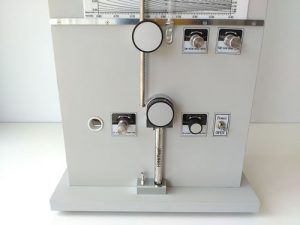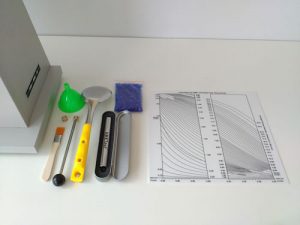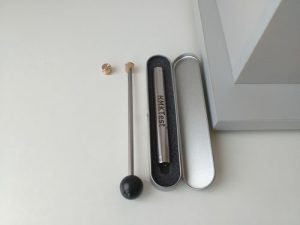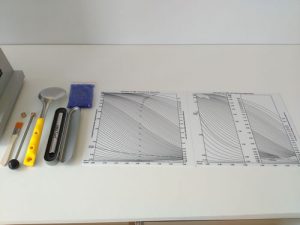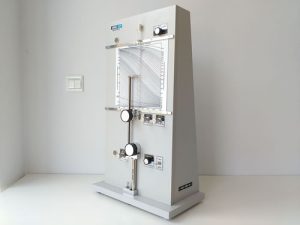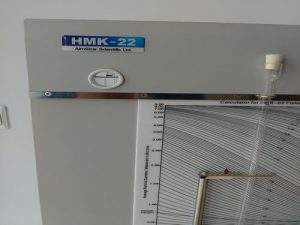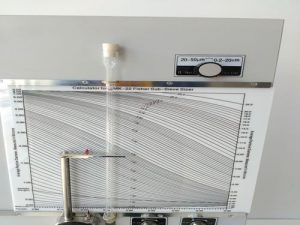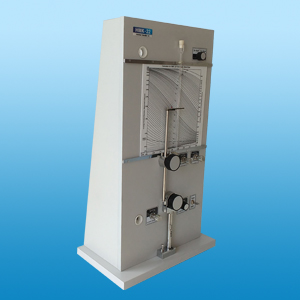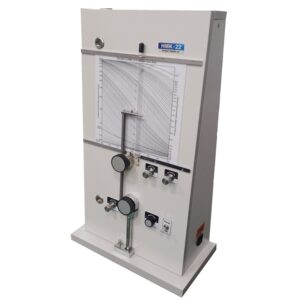What is Fisher Particle Size? 201-52
Fisher Particle Size is a kind of powder average particle size , the basic test method is Fisher air permeability method. That is, under the condition of constant air flow and pressure, measure the specific surface area and convert to average particle size. Fisher method is a relative particle size measurement method. It cannot accurately determine the particle size distribution of powder,Fisher Scientific Model 95 Sub-Sieve Sizer is only use to control the process and product quality. HMK-22 Fisher Sub-Siever sizer uses air permeability to fast determine the average particle size of powders. It features simple structure, easy operation, stable performance, good reproducibility therefore being widely used in industries and applications such as powder metallurgy, magnetic materials, hard metal and alloy, tungsten & molybdenum material, gun powder, ceramics,medicine, food, cement, electronics, chemical industry, national defense, space science and technology as well as quality control on import and export powders. It has become the popular means of quality control
The reproducibility of the results is good thanks to large sample and representativeness of testing the particle size by air permeability method. For regular powders, the results are in agreement with those obtained by microscopy method. The air permeability method reflects the external specific surface of the powder and represents the particle size of single or secondary particles. If it used in combination with the BET method (reaction full surface and primary particle size), the concentration of the powder can be determined and the number of primary particles in secondary particles can be determined.
HMK-22 fisher method is a relative measurement method, which can not accurately determine the particle size distribution of powder, it is only used to control the processing and product quality. The method can only accurately measure the transmissivity of air through the powder accumulation body, and its value depends on its pore structure. The porosity, particle shape, particle size, particle size composition, particle size distribution and pressing method of powder accumulation body all affect the pore structure. Therefore, this method is only applicable to powders with the same chemical composition and similar particle size composition. For powders with the same chemical composition but different particle size, there will be a large measurement error. Sometimes two powders with the same chemical composition but different particle size will get the same fisher number because they have the same transmissivity. Therefore, the particle size measured by this method cannot be compared with other particle size measurement results such as laser diffraction particle size distribution.
The instrument which measures the fisher particle size is Fisher Sub-Sieve Sizer (F.S.S.S). The principle of calculating particle size is based on the formula establish after Gooden and Smith transform the cauching-kamen equation. Reference: principles of powder metallurgy, edited by Huang Peiyun (2nd edition) [1].
The particle size analyzer is composed of air pump, pressure regulator, sample tube, pressure gauge, needle valve and particle size calculation chart. See the picture below:
1.air pump 2.filter 3.pressure regulating valve 4.voltage-regulator tube 5.desiccant 6.sample tube 7.porous plug 8.filter paper pad 9.sample 10.ratch 11.hand wheel 12.u-tube pressure gauge13.particle size reading board 14,15.needle valve 16.shift valve
When the air pump is started, the air flows through the filter into the vertical stabilizer tube with water, then flows through the desiccant tube, removes the water and flows into the sample tube, and finally flows into the atmosphere through the needle valve.
For each test, the powder sample must be pressed to the height of the corresponding porosity by the pressing mechanism composed of rack and handwheel in advance according to the height curve of the sample. When air passes through the sample accumulation, a certain pressure drop will be generated. The larger the particle is, the smaller the pressure drop is. The higher the water level of the u-tube manometer is, the larger the particle size value is read on the size reading board. The smaller the vice. The u-tube manometer has two functions, it is a manometer and a flowmeter (capillary flowmeter). Its value not only represents the pressure after the air passes through the powder sample accumulation body, but also represents the flow that the air pass through the needle valve through the powder sample accumulation body.
The specific measurement process of powder particle size is shown in GB/T 3249-2009 method for determining the fisher particle size of powders of metals and their compounds. Each instrument is equipped with a ruby standard tube, on which is marked with high and low values under the specified porosity. The high value is used to calibrate the determination of fine powder, that is the determination of powders of 0.20~20μm. The low value is used to calibrate the determination of coarser powder, that is the determination of powders of 20~50μm .
When measuring, the best porosity should be found first, and then the particle size of the powder should be measured at the best porosity. Use a powder sample to find the best porosity, starting from a high porosity, gradually compacting the powder, depending on the compressibility of the powder, take 0.005~0.05 different porosity interval. Press once, measure particle size once, until to the limit. Take the average of the porosity corresponding to the two adjacent particle size values closest to each other as the best porosity. Use another sample to measure at the best porosity that has been found. At this point, the data obtained is reported as the final result.
HMK-22 Fisher sub sieve sizer https://www.aimsizer.com/particle_size_analyzer_fisher_sub_sieve_sizer_0-2um_50um.html

